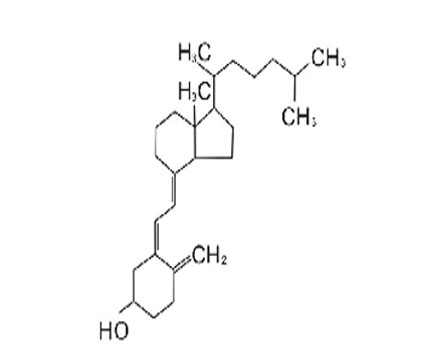Production Methods and Processing Techniques for Corn Dextrin
Corn dextrin is a versatile and widely-used ingredient in various industries, including food, pharmaceuticals, and cosmetics. It is derived from corn starch and has become increasingly popular due to its numerous applications. In this blog, we will delve into the production methods and processing techniques for corn dextrin, focusing on its various uses and benefits.
Understanding Corn Dextrin
Before exploring the production methods, let's take a closer look at corn dextrin itself. Corn dextrin is a water-soluble carbohydrate derived from corn starch through a process known as hydrolysis. It is a white or cream-colored powder with a distinct taste that is easily digestible. Its versatility lies in its ability to act as a thickening agent, stabilizer, binder, and fat replacer in a wide range of products.
Production Methods
The production of corn dextrin involves several steps that ensure its high quality and purity. The first step is the extraction of corn starch from corn kernels. These kernels are soaked in water, allowing the starch to be separated from other components through milling and washing processes. Once obtained, the corn starch is treated with enzymes or acids to break it down into smaller and more soluble dextrin molecules. The resulting mixture is then heated and evaporated to remove excess water, eventually forming a concentrated solution that is dried into corn dextrin powder.
Processing Techniques
To ensure the desired characteristics and functionality of corn dextrin, various processing techniques are employed. One such technique is spray drying, which involves atomizing the dextrin solution into a fine mist and drying it rapidly using hot air. Spray drying not only enhances the solubility and dispersibility of corn dextrin but also improves its flowability, making it easier to handle and incorporate into different formulations. Another commonly used technique is agglomeration, which involves wetting and then drying the powder to form larger particles that exhibit enhanced dissolution properties.
Applications and Benefits
Corn dextrin finds widespread use in the food industry as a thickening and stabilizing agent in various products such as sauces, soups, and baked goods. Its water-soluble nature also makes it a popular choice for powdered beverages and instant foods. In the pharmaceutical industry, corn dextrin acts as a binder and filler for tablets and capsules, allowing for easy disintegration and better drug delivery. Additionally, it is an essential ingredient in cosmetic formulations like creams, lotions, and powders, thanks to its ability to improve texture, consistency, and binding properties.
In conclusion, corn dextrin is a valuable ingredient that is produced through a series of carefully controlled steps. By extracting corn starch and subjecting it to hydrolysis, corn dextrin is obtained and further processed using techniques like spray drying and agglomeration. With its versatile applications and numerous benefits, including improved texture, stability, and solubility, corn dextrin has become an indispensable ingredient in various industries. Whether you are enjoying a delectable sauce, taking a medicine, or applying a nourishing skincare product, chances are corn dextrin is behind it, enhancing your experience.
-
Inulin
-
Polydextrose
-
Resistant Dextrin
- Trehalose
- Resistant Dextrin(Soluble Corn Fiber)
- Resistant Dextrin(Soluble Corn Fiber)(Powder)
- Resistant Dextrin(Soluble Tapioca Fiber)(Powder)
- Resistant Dextrin(Soluble Tapioca Fiber)(Liquid)
- Resistant Maltodextrin Powder
- Resistant Maltodextrin Powder (Liquid)
- Organic Resistant Dextrin Powder (Corn Type) 70%
- Organic Resistant Dextrin Powder (Corn Type) 90%
- Organic Resistant Dextrin Powder (Tapioca Type) 70%
- Organic Resistant Dextrin Powder (Tapioca Type) 90%
- Organic Resistant Dextrin Syrup (Corn Type) 70%
- Organic Resistant Dextrin Syrup (Corn Type) 90%
- Organic Resistant Dextrin Syrup (Tapioca Type) 70%
- Organic Resistant Dextrin Syrup (Tapioca Type) 90%
- Organic Resistant Maltodextrin Powder (Corn Type) 70%
- Organic Resistant Maltodextrin Powder (Tapioca Type) 70%
- Organic Resistant Maltodextrin Syrup (Corn Type) 70%
- Organic Resistant Maltodextrin Syrup (Tapioca Type) 70%
- Organic Soluble Corn Fiber Powder 70%
- Organic Soluble Corn Fiber Powder 90%
- Organic Soluble Corn Fiber Syrup 70%
- Organic Soluble Corn Fiber Syrup 90%
- Organic Soluble Tapioca Fiber Powder 70%
- Organic Soluble Tapioca Fiber Powder 90%
- Organic Soluble Tapioca Fiber Syrup 70%
- Organic Soluble Tapioca Fiber Syrup 90%
- Resistant Dextrin Powder (Corn Type) 70%
- Resistant Dextrin Powder (Corn Type) 90%
- Resistant Dextrin Powder (Tapioca Type) 70%
- Resistant Dextrin Powder (Tapioca Type) 90%
- Resistant Dextrin Syrup (Corn Type) 70%
- Resistant Dextrin Syrup (Corn Type) 90%
- Resistant Dextrin Syrup (Tapioca Type) 70%
- Resistant Dextrin Syrup (Tapioca Type) 90%
- Resistant Maltodextrin Powder (Corn Type) 90%
- Resistant Maltodextrin Powder (Tapioca Type) 90%
- Resistant Maltodextrin Syrup (Corn Type) 90%
- Resistant Maltodextrin Syrup (Tapioca Type) 90%
- Soluble Corn Fiber Powder 70%
- Soluble Corn Fiber Powder 90%
- Soluble Corn Fiber Syrup 70%
- Soluble Corn Fiber Syrup 90%
- Soluble Tapioca Fiber Powder 70%
- Soluble Tapioca Fiber Powder 90%
- Soluble Tapioca Fiber Syrup 70%
- Soluble Tapioca Fiber Syrup 90%
-
Dioscorea Opposita Dietary Fiber
-
Wheat Dietary Fiber
-
Oat Dietary Fiber
-
Polydextrose Powder (Conventional Type)
-
Polydextrose Powder (Special Type)
-
Polydextrose Powder (Sugar Free Type)
-
Polydextrose Powder (Type II)
-
Polydextrose Powder (Type III)
-
Polydextrose Syrup (Conventional Type)
-
Polydextrose Syrup (Refined Type)
-
Polydextrose Syrup (Special Type)
-
Polydextrose Syrup (Standard Type)
-
Polydextrose Syrup (Sugar Free Type)
- Fructo Oligosaccharide
-
Malt Oligosaccharide
- Isomalto-oligosaccharide 900 Powder
- Isomalto-oligosaccharide 900 Powder(Corn)
- Isomalto-oligosaccharide 900 Powder(Tapioca)
- Isomalto-oligosaccharide 900 Syrup
- Isomalto-oligosaccharide 900 Syrup(Tapioca)
- Isomalto-oligosaccharide 900 Liquid (Corn)
- Isomalto-oligosaccharide 900 Liquid (DP3)
- Isomalto-oligosaccharide 900 Liquid (Tapioca)
- Isomalto-oligosaccharide 900 Powder (Corn)
- Isomalto-oligosaccharide 900 Powder (DP3)
- Isomalto-oligosaccharide 900 Powder (Tapioca)
- Organic Isomalto-oligosaccharide 900 Liquid (Corn)
- Organic Isomalto-oligosaccharide 900 Liquid (DP3)
- Organic Isomalto-oligosaccharide 900 Liquid (Tapioca)
- Organic Isomalto-oligosaccharide 900 Powder (Corn)
- Organic Isomalto-oligosaccharide 900 Powder (DP3)
- Organic Isomalto-oligosaccharide 900 Powder (Tapioca)
- Xylo-oligosaccharide
- Galacto-oligosaccharide
-
Mannan Oligosaccharide
-
Isomaltulose Powder
-
Saigao Stachyose






